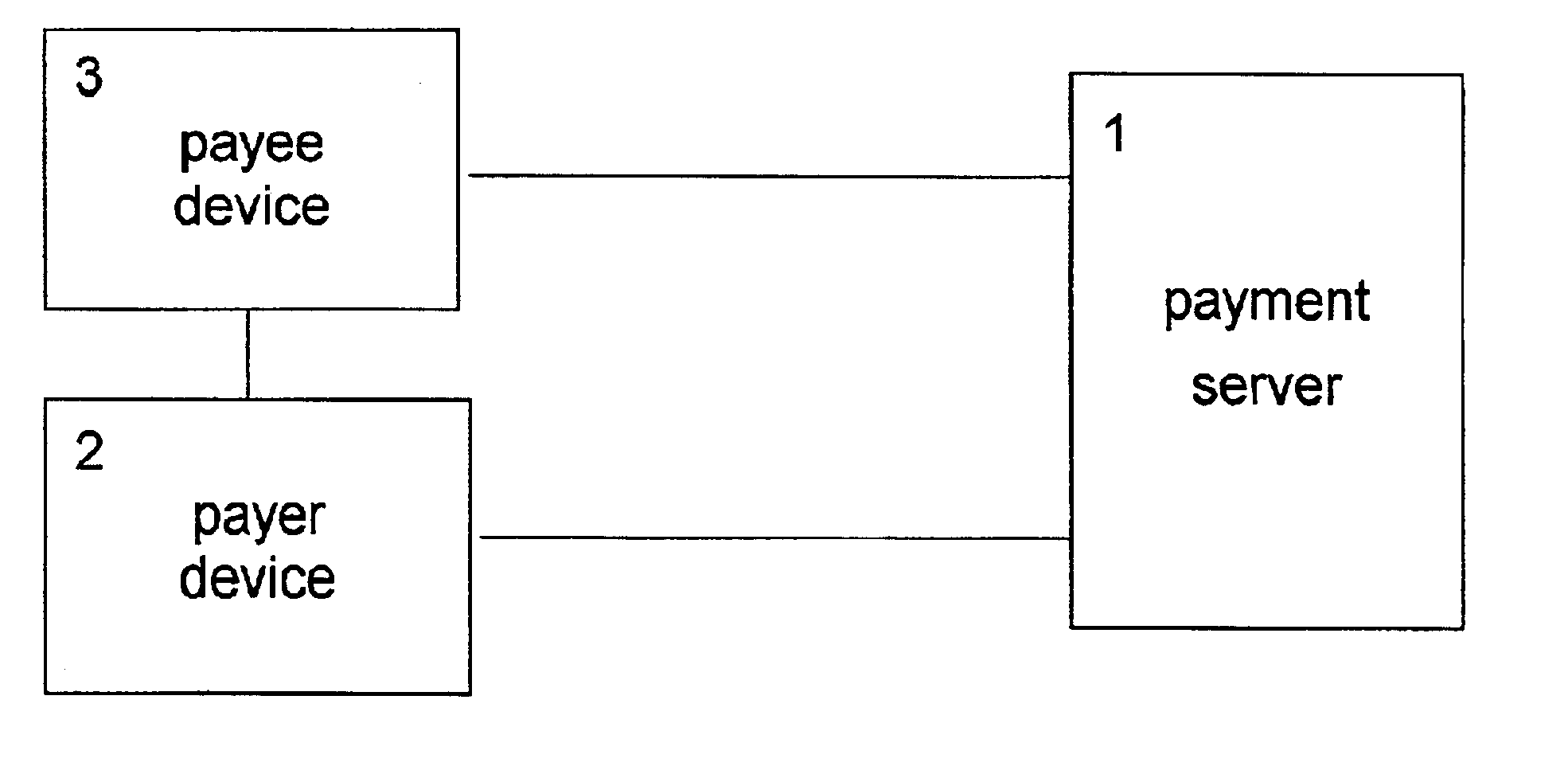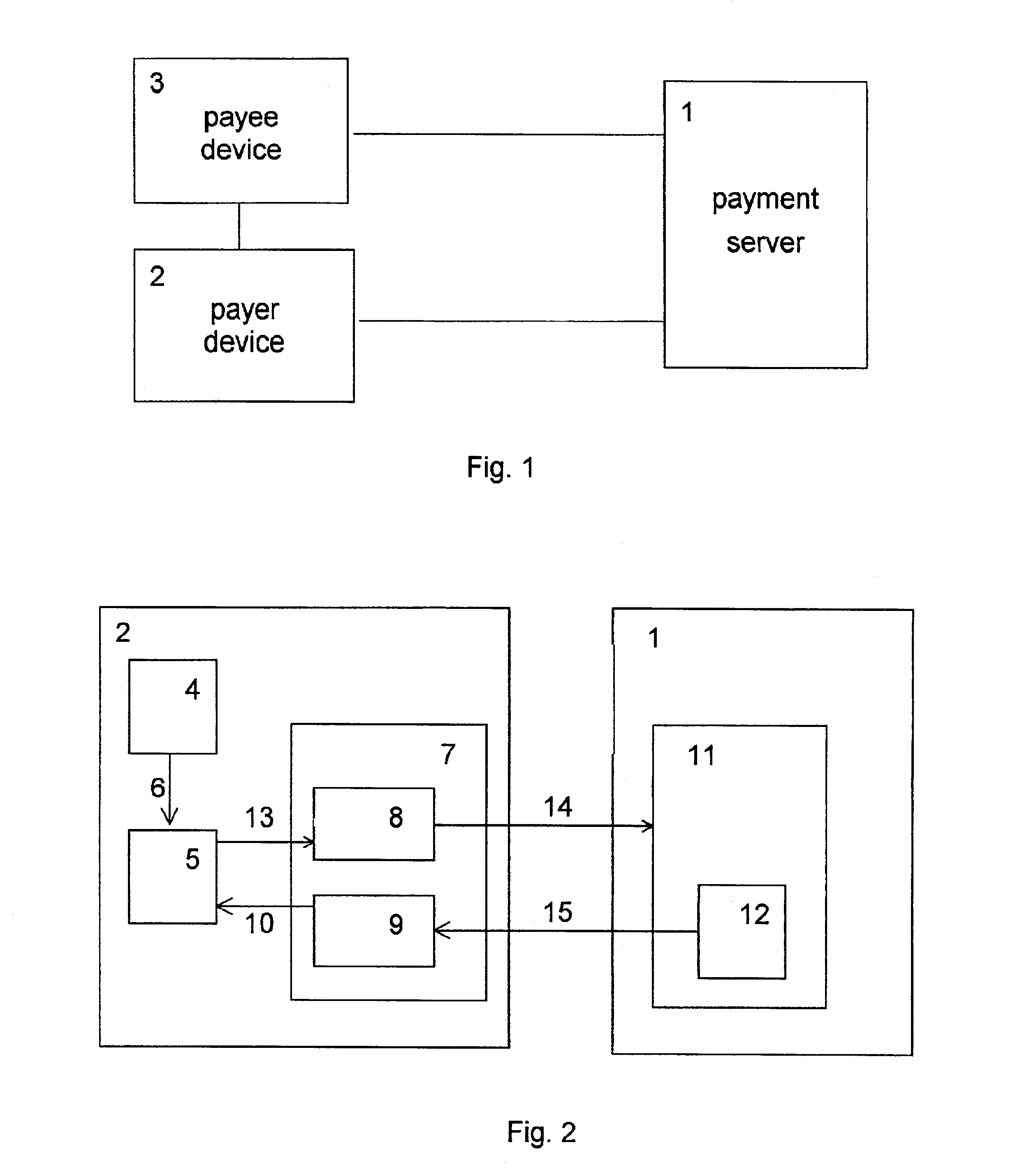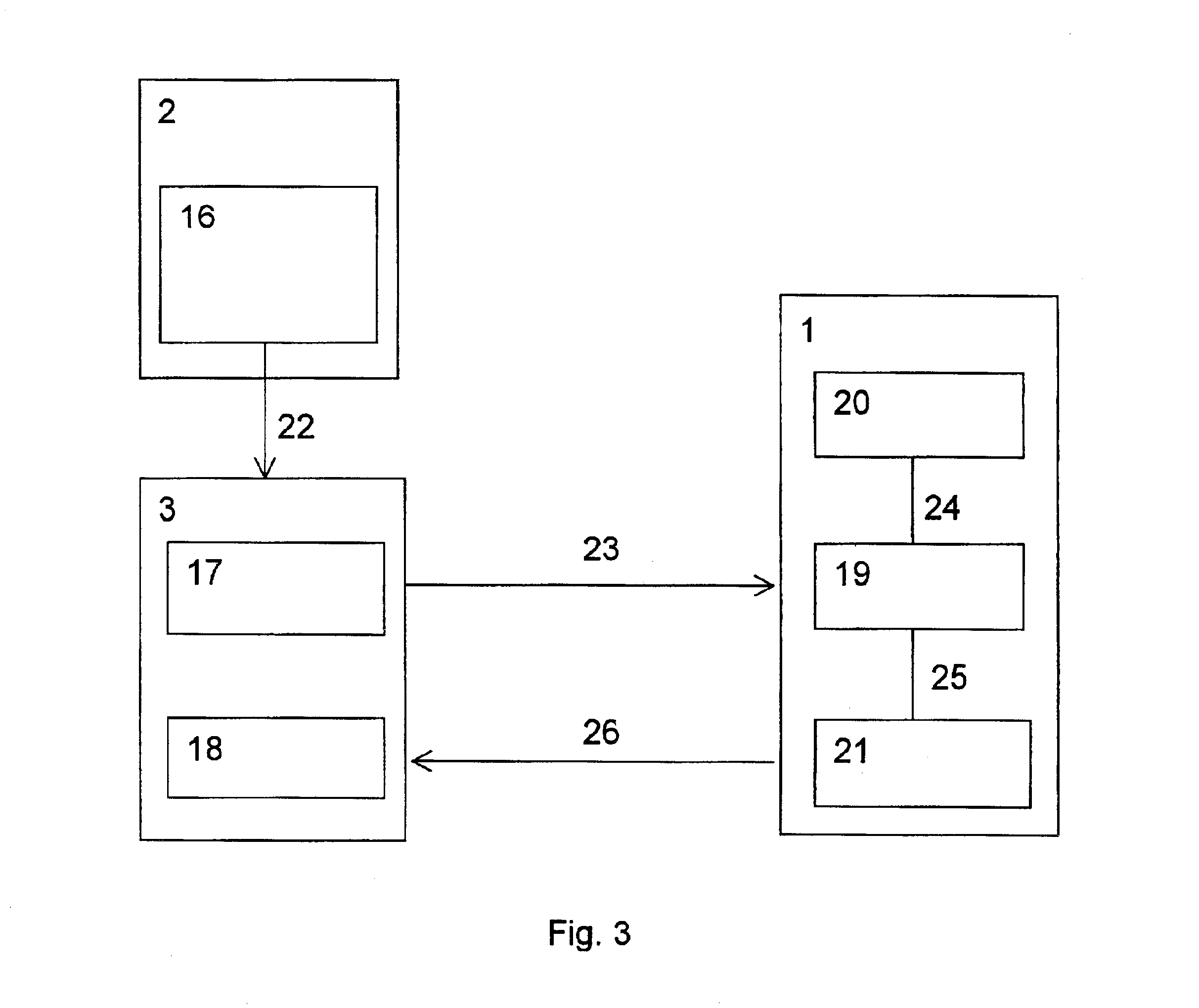Method for carrying out transactions and device for realizing the same
a technology of electronic payment and method, applied in the field of electronic payment system, can solve the problems of insufficient reliability of known tamper resistance technology to thwart such a risk, extreme instability, and disastrous effects on the entire system, and achieve the effect of effective and reliable payment mechanism
- Summary
- Abstract
- Description
- Claims
- Application Information
AI Technical Summary
Benefits of technology
Problems solved by technology
Method used
Image
Examples
example 1
As the money signature system, one uses a system based on the digital RSA-signature (B. Schneier, Applied Cryptography: Protocols, Algorithms, and Source Code in C, John Wiley&Sons, New York, 2nd edition, 1996 and A. J. Menezes, P. C. Van Oorshot, S. A. Vanstone, Handbook of Applied Cryptography, CRC Press, 1997). In this system, a secret key is the pair (N, D), where D is a secret exponent and N is the modulus. Here, the corresponding public key is a pair (N, E), where E is a public exponent satisfying the condition XE·D=1 (mod N) for each integral number X coprime to N. The RSA system allows several methods of making a blind digital signature. For example, one of these methods is described in the patent: D. Chaum, Blind Signature Systems, U.S. Pat. No. 4,759,063, 19 Jul. 1988, and another one is described in the patent: D. Chaum, Blind Unanticipated Signature Systems, 15 U.S. Pat. No. 4,759,064, 19 Jul. 1988.
As an admissible level, one takes an arbitrary collection of nonnegative ...
example 2
The preparatory actions are performed as in Example 1 described above.
The payee, who is a seller in the present example, opens an account with public key ES in the bank as described above. Further, in the storage device of the seller's “Electronic wallet” one creates a record with information about the opened account, which information contains the secret key DS corresponding to the public key ES, the number AccountId of the opened account, and other attributes of the account.
In this example, the replenishment source of the payer1s “Electronic wallet” is the payer's account, which he opens in exactly the same way as the payee. The payer delivers a certain amount of money to the account opened by him by a postal money order; for the sake of definiteness, let it be 200 dollars.
Using the opened account as the replenishment source, the payer replenishes his “Electronic wallet” with the help of the operation of primarily filling a payment certificate.
During the operation of primarily fil...
example
In this example, we use agreements and notation adopted in Example 1 described above.
The operation of replenishing the payment certificate, i.e., the operation of obtaining a payment certificate signature whose level exceeds the level of the payment certificate signature contained in the payer device at the beginning of the replenishment operation, is performed by obtaining the blind money signature of the operator. Here, as the initial data one takes the payment certificate signature contained in the payer device. Suppose that the payer's “Electronic wallet” contains a payment certificate with signature S1 of level (0, 2, 30). Suppose that the value of this payment certificate, which is equal to 2 dollars and 30 cents in the present case, is not sufficient for the payer to make a certain purchase. In order to make this purchase anyway, the payer replenishes his “Electronic wallet” by replenishing the payment certificate.
For this purpose, one delivers the blinded signature S1 of the...
PUM
 Login to View More
Login to View More Abstract
Description
Claims
Application Information
 Login to View More
Login to View More - R&D
- Intellectual Property
- Life Sciences
- Materials
- Tech Scout
- Unparalleled Data Quality
- Higher Quality Content
- 60% Fewer Hallucinations
Browse by: Latest US Patents, China's latest patents, Technical Efficacy Thesaurus, Application Domain, Technology Topic, Popular Technical Reports.
© 2025 PatSnap. All rights reserved.Legal|Privacy policy|Modern Slavery Act Transparency Statement|Sitemap|About US| Contact US: help@patsnap.com



